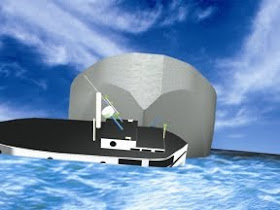In the summer of 2008, Coast Guard Sector Houston/Galveston staff worked with the Apostleship of the Sea to aid a mariner. Excerpts from the e-mail correspondence follow.
5/25/08 Seafarer’s spouse to Coast Guard
Coast Guard, Please help. My husband is aboard a vessel which is travels (sic)—Signed … Wife of foreign crewmember aboard a foreign-flagged chemical carrier calling on the port of Houston in May 2008.
on the high seas between the United States, Europe, and Trinidad. He is very
sick with the flu and the symptoms are causing him to slowly lose his hearing.
He is not able to see a qualified doctor because such doctors are not available
onboard the vessel or in Trinidad.
Now that the vessel has returned to the Gulf Coast of the United States, immigration personnel are unable to sign the referral form before the vessel leaves for the high seas. I do not know what to do because he will not be able to continue his work as a
seafarer with a loss of hearing, and my family of three children greatly needs his full health and support. Please help me and my husband.
5/28/08 Coast Guard to seafarer’s spouse
—Signed … Chief, Inspections Division, Coast Guard Sector Houston/Galveston.Ma’am, we have inspected the vessel aboard which your husband works. During our
crew interviews and competency assessments, we found that he is able to perform
the tasks of his license and watchstanding duties, which are those of a third
engineer. Your husband’s medical needs are presently being taken care of by
doctors here in Houston.
5/28/08 Seafarer’s spouse to Coast Guard
Thank you for your great help. Thank you very much because the medical attention
needed by my husband requires constant oversight.
6/3/08 Seafarer’s spouse to Coast Guard
Coast Guard, I am sorry if I interrupted you again but my husband has been
diagnosed by the doctor with a perforated eardrum. He is diagnosed as being fit
for work but is suffering through a lot of pain.
Can you help us to have my husband sent home and have the company provide medical assistance? The ship will be in the United States again on June 10. I am very sorry for my interruption but I do not know where to seek assistance. I hope you understand.
6/3/08 Coast Guard to seafarer’s spouse
Ma’am, researching the Notices of Arrival supplied to the Coast Guard by the
master, I see that the vessel trades regularly in the United States. May I
direct you to seafarer representatives, who will be able to provide you with
options of how to handle such requests? ...
... At the end of our correspondence, I have included a website that lists the people who minister to the needs of seafarers like your husband. I routinely work with two of the Texas port chaplains listed on this page. If you are not able to establish
communication with a port chaplain, please let me know.
6/3/08 Seafarer’s spouse to Coast Guard
Thank you very much. Indeed the information you gave me will give a lot of help
for us. Thank you and God bless.
6/4/08 Coast Guard to the president of the Apostleship of the Sea in the United States
Good morning. Late yesterday, I responded to an e-mail provided to me from the
wife of the third engineer aboard a foreign-flagged chemical carrier. The Coast
Guard has been in contact with the engineer and with the wife and there are some
areas of concern that are outside of Coast Guard jurisdiction.
I bring this to your attention in order to alert you of this ongoing situation, and of the reference I made to your good organization.
—Signed ... Chief, Inspections Division, Coast Guard Sector Houston/Galveston.
6/4/08 Apostleship of the Sea in the United States to Coast Guard
I will keep an eye out for the vessel. Thanks for thinking about us. I will try
to visit the ship when she comes into our port.
I will also pass the word along to other seafarer welfare organizations that might be able to help while the vessel is visiting another country.
—Signed ... president of the Apostleship of the Sea in the United States.
6/25/08 Resolution
Vessel arrives in Vancouver, Wash. Through the efforts of the Coast Guard, the Apostleship of the Sea, the owner of the vessel, and shipping agents, the third engineer of concern is removed and provided the necessary medical treatment in his country of origin.
For more information:
Full article is available at http://www.uscg.mil/proceedings/winter2009.
Subscribe online at http://www.uscg.mil/proceedings/subscribe.asp.
 Excerpt from U.S. Coast Guard
Excerpt from U.S. Coast Guard 


 Part III—A Lesson in Maritime Management
Part III—A Lesson in Maritime Management

 Part II—A Lesson in Maritime Management
Part II—A Lesson in Maritime Management


 Excerpt from U.S. Coast Guard “
Excerpt from U.S. Coast Guard “
 The Process
The Process





 The Incident
The Incident